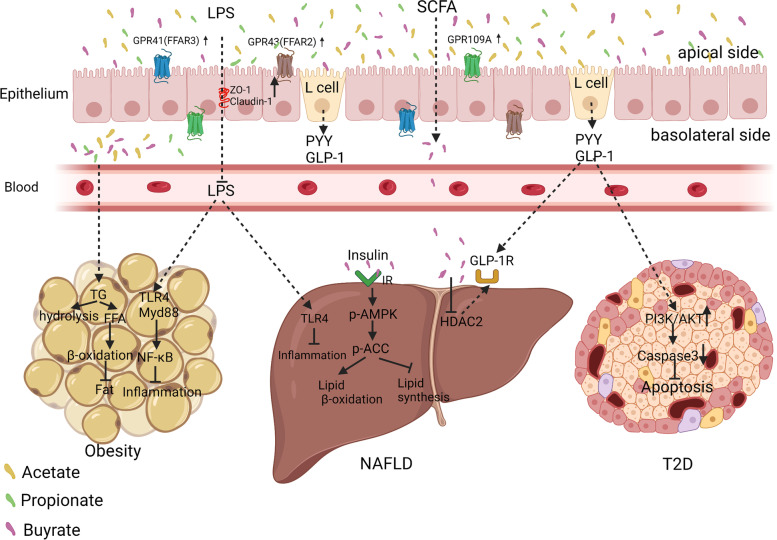Fig. 4.
Intestinal microbiota metabolites acetate, propionate, and butyrate alleviates obesity, non-alcoholic fatty liver disease (NAFLD) and type 2 diabetes (T2D). Short-chain fatty acids (SCFAs) increase the intestinal barrier function by elevating the expression of zonula occludens-1 (ZO-1) and claudin-1 in IECs, preventing lipopolysaccharide (LPS) from entering the blood from the intestine, and further inhibiting adipose tissue inflammation. SCFAs promote the production of glucagon-like peptide-1 (GLP-1) in L cells; GLP-1 enters the liver and binds to the GLP-1 receptor on the surface of hepatocytes, promoting hepatic β-oxidation by activation of AMPK, thereby relieving fatty liver. GLP-1 activates PI3K/AKT signalling in pancreatic islets, inhibits apoptosis, and alleviates T2D. Other abbreviations are: GPCR: G protein-coupled receptors; FFAR: free fatty acid receptor; NF-κB: nuclear factor kappa-B; TG: triacylglycerol; TLR4: Toll-like receptor 4; p-ACC: phospho-acetyl-CoA carboxylase; p-AMPK: phospho-adenosine monophosphate-activated protein kinase; PYY: Peptide YY; and IECs: intestinal epithelial cells

